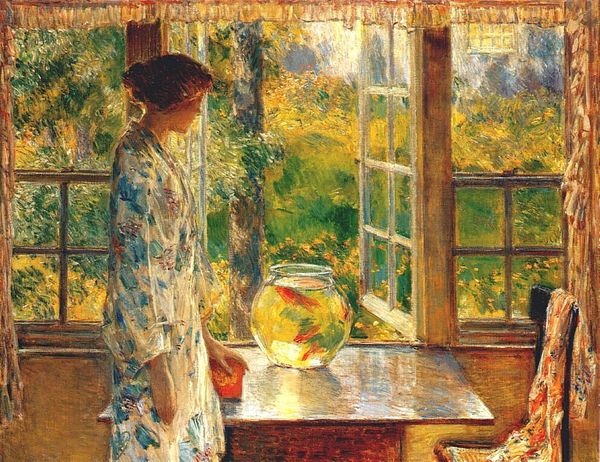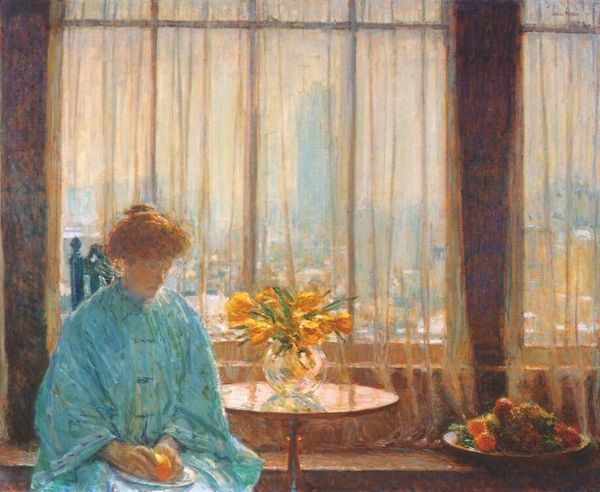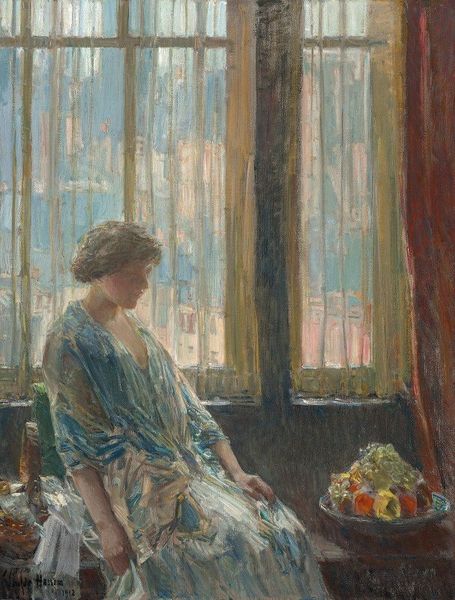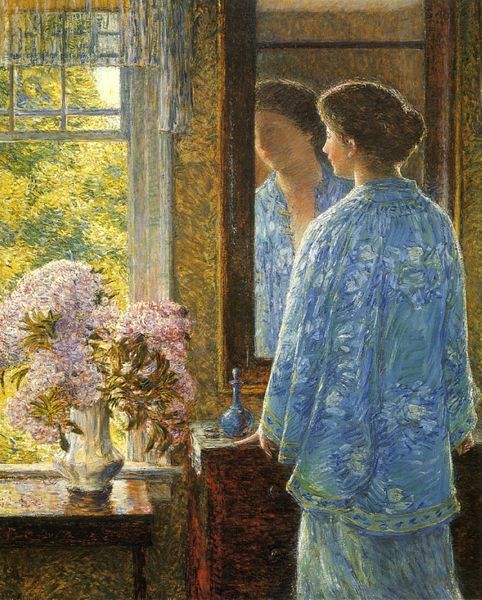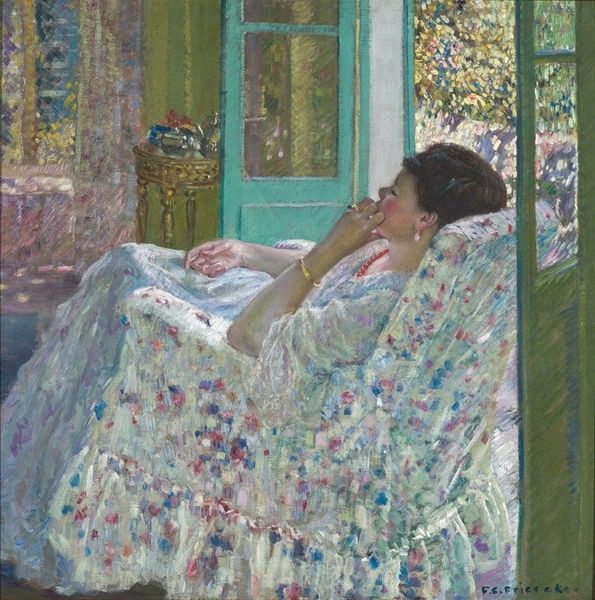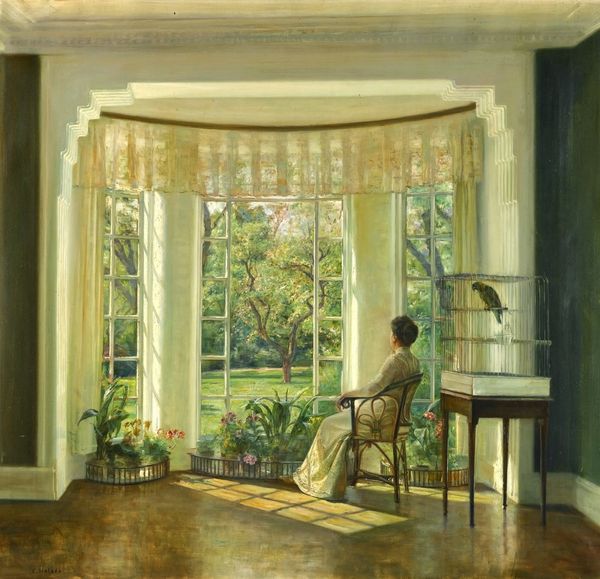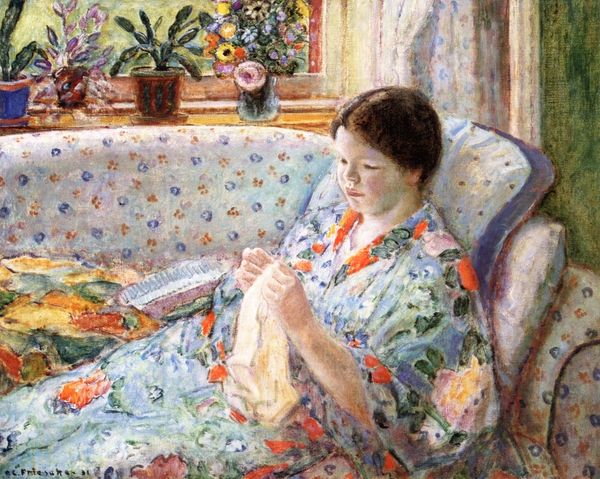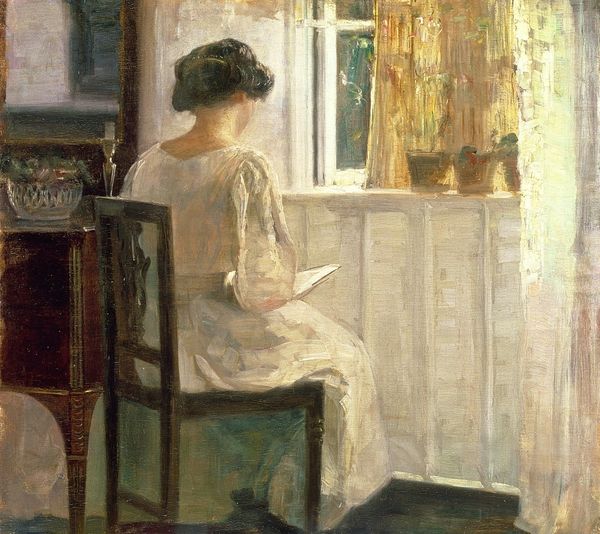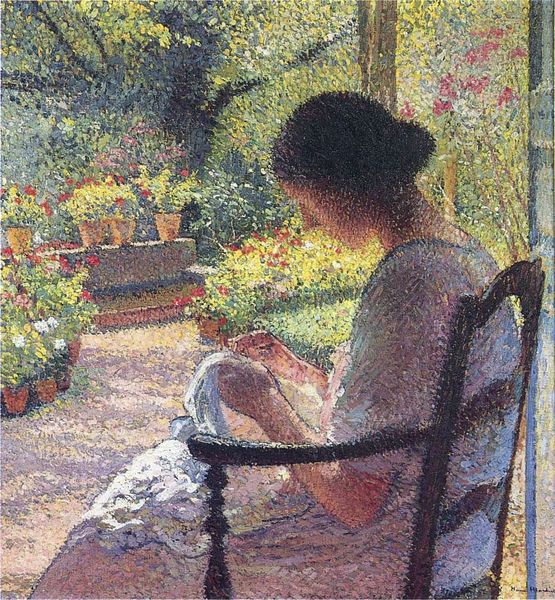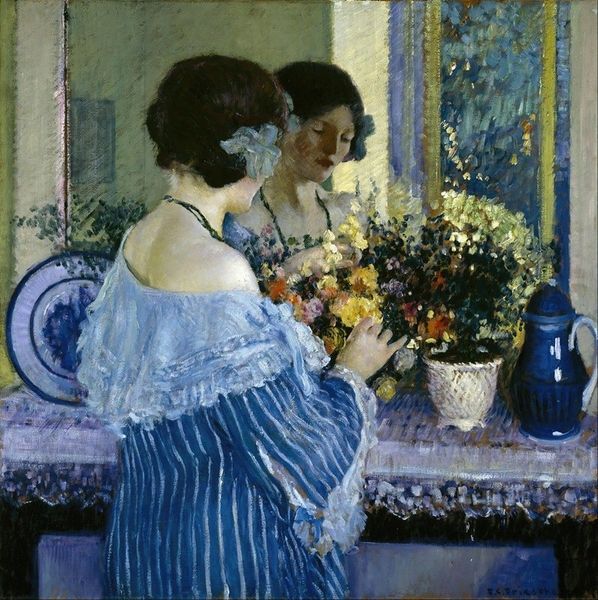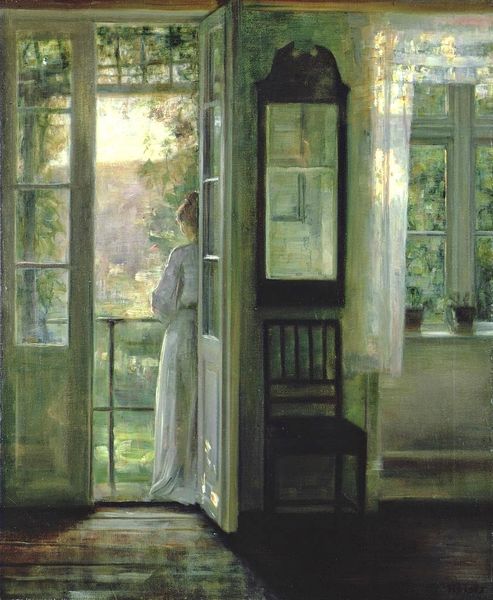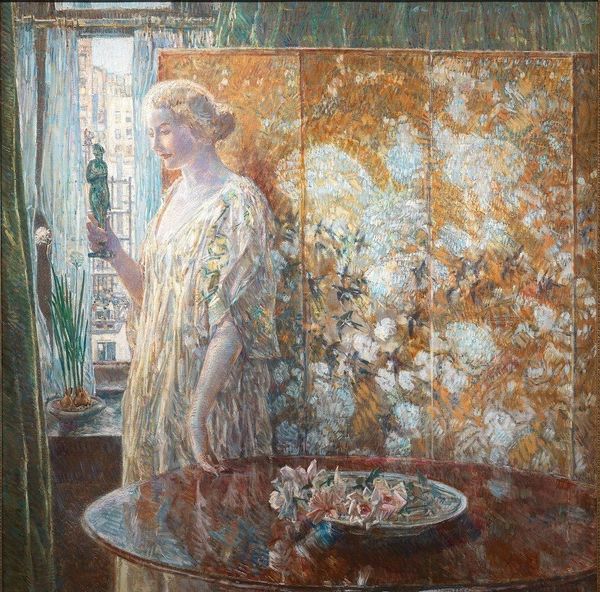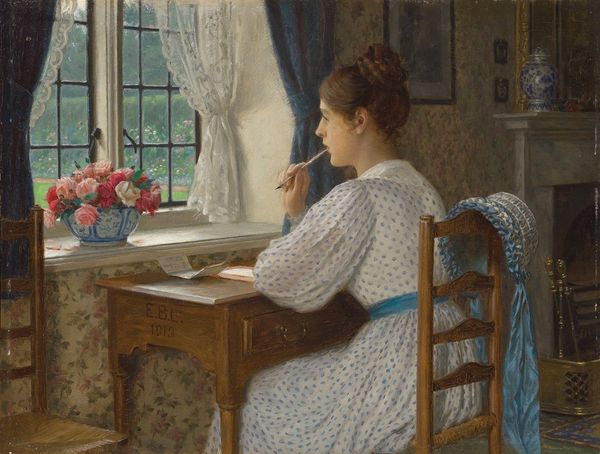
Copyright: Public domain
Curator: What a delightfully serene painting. “The Goldfish Window,” created in 1916 by Childe Hassam. A perfect example of American Impressionism rendered in oil paint. Editor: Serene, yes, but with a slightly melancholic edge. The colors are bright, the outdoor scene is vibrant, yet the figure seems contemplative, almost wistful. There is a clear divide between the vibrant colors outside and the enclosed space inside, maybe that speaks to the figure’s feeling about freedom? Curator: Absolutely, let's delve into that. Consider the formal elements; Hassam utilizes impasto techniques, layering thick brushstrokes to capture the luminosity of light as it streams through the window. Note the positioning of the figure. The fishbowl is right on the plane where the inside meets the outside, literally creating a formal tension between these two spatial structures. It acts almost as a metaphor for confinement versus expansiveness. Editor: And it’s a moment captured in a very specific historical context. Hassam was painting this during World War I. While geographically distant, the war deeply impacted American consciousness. The domestic scene, the woman in her patterned kimono, the goldfish – these elements might symbolize a longing for peace, for the comfort and beauty of the everyday, amidst global turmoil. Does the Goldfish bowl hint at political tensions and ideas about liberty versus restriction? Curator: Fascinating perspective! And it also informs how we might read the woman’s attire. A Kimono in 1916 could act as a cultural marker or exotic symbol of leisure and privilege. Editor: Indeed. By presenting the everyday life of privileged women, Hassam’s canvas captures the contradictions of early 20th-century American society, a society enjoying relative peace but on the brink of major shifts. His visual vocabulary, infused with this mood of tranquility but underpinned by palpable tension, seems to invite deeper consideration of cultural attitudes and geopolitical anxieties of that historical moment. Curator: Precisely. His masterful use of texture and color gives it undeniable aesthetic appeal. Whether it signifies quiet reflection or a yearning for broader horizons is open to endless interpretive readings. Editor: An artwork of that era reflects the historical circumstances during which it was produced and perceived. Curator: A compelling convergence of form and history!
Comments
No comments
Be the first to comment and join the conversation on the ultimate creative platform.
